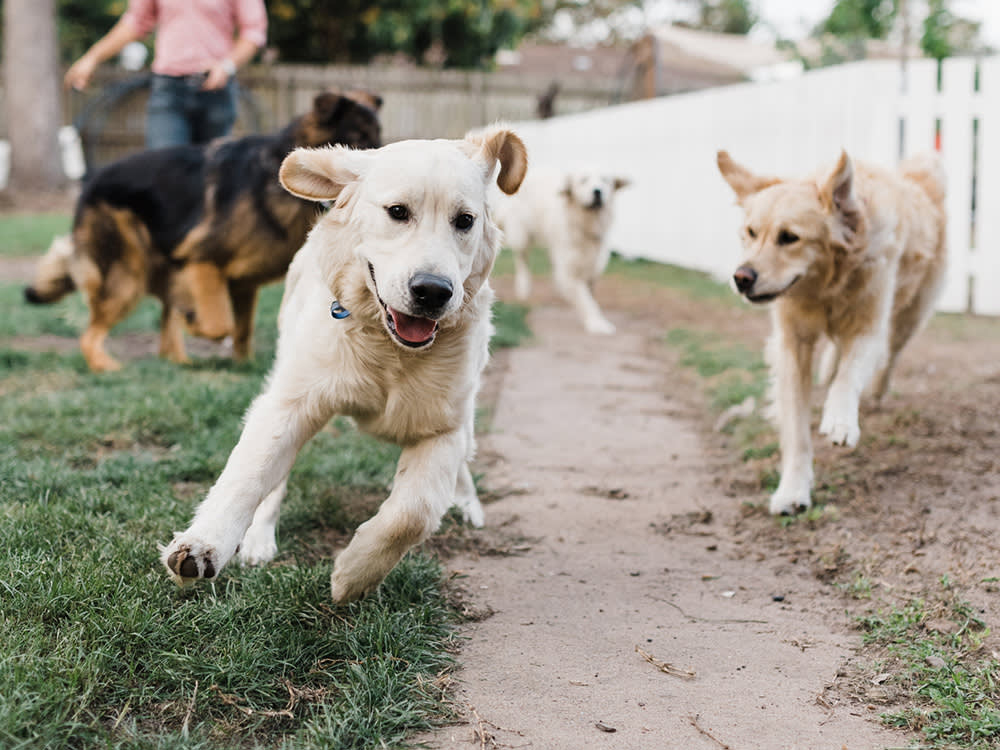By Heidi Clayton
When raising a puppy, I always remind people that the process is a marathon, not a sprint. During that marathon, I find that the teenage months are far worse than the teething and housebreaking months. Your tiny puppy is going through some changes, physically. Their sudden memory lapse on what the word “sit” actually means is totally normal, and it will pass. Here are some tips to help you survive the sudden rebellion in your dog.
The most frequent mistake I see with teenage dogs is equating the physical size of your puppy with their actual brain maturity. Puberty in dogs occurs between the ages of 6 and 7 months. It can last until about 18 months or so in some dogs. During that time, your puppy has grown in size physically. However, their brain is still trying to catch up.
Volunteer Robert Williams showing off one the meals given out on Sunday October 29thMuch like human teenagers, dogs are also going through hormonal changes that lead to the dog equivalent of hissy fits when they suddenly go nuts on walks or basically flip you the middle finger when you ask them to come. Even dogs that are spayed or neutered when young will go through this phase as their brains are growing.
When a puppy gets bigger, most people start giving them too much freedom too fast. It is during this time because their brain is under development that they really struggle with self-control. If you start to see problem behaviors and rebellion in your young dog, you need to go back to basics and keep boundaries in place.
Another common mistake I see is that when teenage dogs start acting out, everyone’s answer is to walk them further and further only to be completely frustrated when getting home that the 5-mile hike did nothing to tame the beast. First of all, remember that despite your dog’s size at this age, their bodies are still under development. You will want to protect their joints until at least 18 months of age. Long, out-of-control walks on pavement should be limited.
During these months, I focus less on how far we walk but instead on how “good” the walk will be. Short walks are the key to good walks with teenage dogs.
During this phase of life, mix physical exercise with mental stimulation. Instead of just walking far, mix the walk with training such as rewarding them for ignoring distractions. Practice “sit” or “down” on a leash when distractions are present, which is a different skill than just sitting in the kitchen for their dinner.
On a personal note, a teenage bull terrier can challenge even the sanest and most levelheaded human around. I relate to the frustration that many dog owners feel in their dog’s adolescence. This is the time when young dogs start to chase squirrels and cars on walks, ignoring their owner’s commands. Dog owners have to compete for their dog’s attention on these walks.
To combat this, I doubled down on building a bond with my dogs. I train dogs that attention from their owner is equally as rewarding as chasing a squirrel and pulling their humans down the street in the process. While it’s important to let dogs be dogs sometimes, start rewarding your dogs for obeying commands on walks.
It may seem like all of the training you did with your baby puppy is lost. Don’t fret. That information is still there bouncing around in that growing brain. With patience and consistent training, you will soon be on the other side of dog puberty, and the effort will have paid off.
If you have any questions, please feel free to email me at heidi@fouronthefloordogtraining.net.
Heidi Clayton started Four On the Floor Dog Training to provide positive, reward-based dog training in South Jersey. She breeds, trains and shows bull terriers under the SoraBully’s Bull Terriers kennel name. Email questions to heidi@fouronthefloordogtraining.net or learn more at https://fouronthefloordogtraining.net










